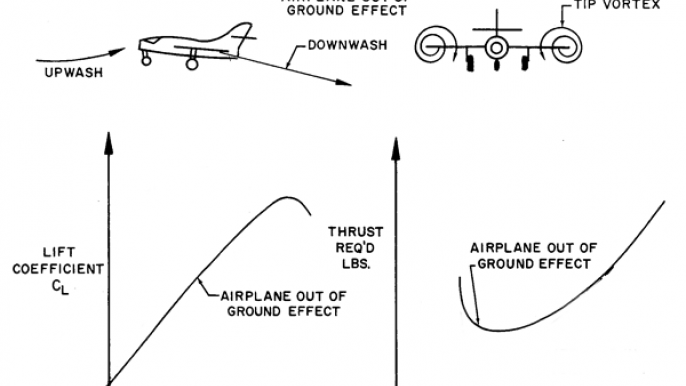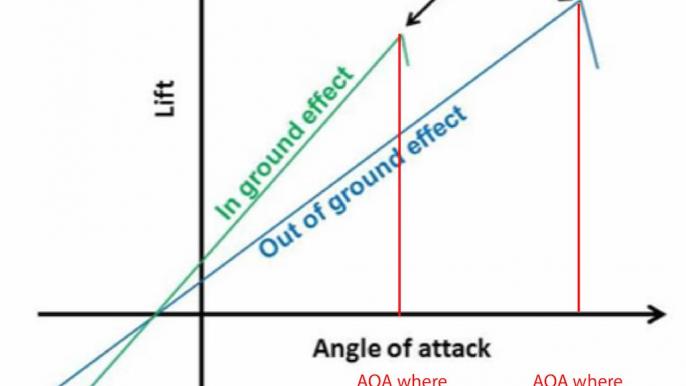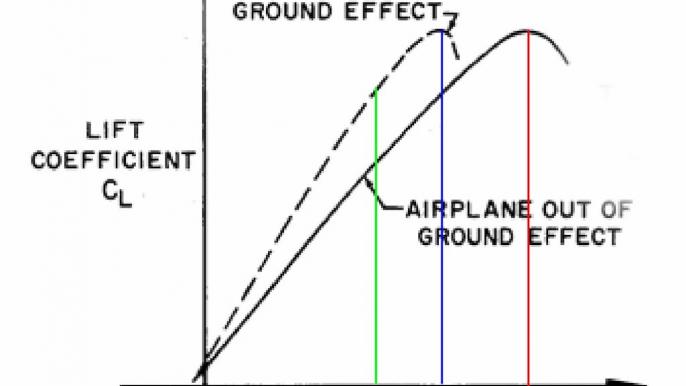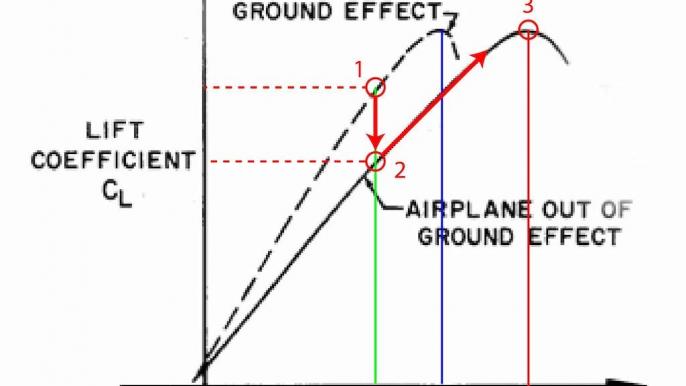
If you missed the first part of this article series, start here.
Most of us are taught early on that once the aircraft is within one-half wingspan height above the runway, we lose some drag because the wingtip vortices no longer wrap completely over the wing, reducing induced drag. And that is true. But it is only half the phenomenon. When you are in ground effect, you essentially have a different and more efficient wing. To understand a wing's performance in ground effect (IGE), you must first consider it out of ground effect (OGE).

You may have seen the vortices around your wingtips on a humid or misty day and have an intuitive understanding that wingtip vortices are formed when higher pressure air below a wing flows around the wingtips into the lower pressure region on top of a wing that is developing lift. You have more pressure under the wing than over it, so the pressure below wants to wrap around to the top. Of course, the wing is moving forward, so this movement from bottom to top tends to trail aft. The downward force of the vortices not only subtracts from the upward force, but it also increases induced drag on the wing. It makes the wing less efficient.

If you had an infinitely long wing, you wouldn’t have any wingtip vortices and the wing would seem to produce greater lift with less induced drag. But you don’t need an impossibly long wing, you just need to fly low enough to interrupt the vortices so fewer of them reach the top of the wing. To the pilot, flying in this ground effect appears to have made the wing more efficient, because it really has.
If you place the IGE and OGE coefficient of lift to angle of attack (AOA) curves together, you will notice that the IGE curve moves to the left. Looking at the CL to AOA chart (on the left), you see that flying at a given AOA, you get more lift when IGE than OGE. The wing is more productive when in ground effect. But looking at the Thrust Required to Velocity chart (on the right), we see that for any given velocity, it takes more thrust to fly OGE.
The consequence for us in the balked landing situation is that we could find ourselves just barely climbing while in ground effect, and once we do climb out of ground effect, we may not have enough thrust available to maintain airspeed.
There is research that indicates the CL-MAX (the peak of the curve) remains the same, but there is also research that shows it is lower when IGE. An April 2, 2011 crash of a test Gulfstream G650 showed that for some cases, the CL-MAX when IGE is reduced compared to OGE. The aircraft will stall at a lower angle of attack when in ground effect. This is important to us in a balked landing situation.

How slowly are you willing to fly after balking a landing? We quite often rely on our approach reference speed, commonly called VREF, as the speed we know will keep us safe. It is usually based on 1.23 times the stall speed of the aircraft. But that stall speed is based on the stall AOA, which is determined while flying out of ground effect. So, if you are balking a landing and are IGE, the VREF you think will keep you above the stall might not, since it is based on being OGE.

Let’s examine a hypothetical aircraft that just balked its landing while in ground effect. Suppose the CL-MAX while IGE is 10 deg. and that equates to 115 KCAS in this situation (blue in the diagram). Suppose also that the CL-MAX while OGE is 14 deg. and that equates to 100 KCAS in this situation (red in the diagram). In this situation, your VREF will probably be 123 KCAS (1.23 times the OGE stall speed). If you are just barely climbing IGE at 123 kt. (the green line in the diagram), you might think you have a 23% margin above the stall and be tempted to pull back farther on the stick. But until you leave ground effect, your true stall speed is 115 KCAS. If you pull back farther than 115 KCAS while IGE, you will stall the aircraft.
The lesson here is to give your VREF a healthy margin when in ground effect.

Can you be flying below the stall in ground effect and then stall simply by climbing out of ground effect? If you look at the CL curves while sitting in the safety and comfort of your desk, the answer appears to be no. But keep in mind all this is happening very fast and the change from IGE to OGE may be a split-second transition. It gets very dicey. Perhaps another hypothetical is in order. (Actually, the same hypothetical, but just as the aircraft leaves ground effect.)
This time around, let's say you maintain your calculated VREF of 123 KCAS all the way to the point your ground effect stops (Point No. 1 on the chart). You may argue that ground effect doesn't switch off from on and that's true. But it happens very fast. As it is happening, your CL drops from the IGE line to the OGE line and the airplane wants to stop climbing and you feel it sinking (Point No. 2 on the chart). So, you pull back on the stick. If you do this just right, you will regain the original CL and perhaps a little more. But how well calibrated is your hand? All this happens very fast and the chance of overshooting your pull and ending up at CL-MAX while OGE is very high (Point No. 3 on the chart).
When you leave ground effect you have two performance "obstacles" to overcome: You will have a loss of lift coefficient and an increase in induced drag. As with our previous hypothetical, having a healthy margin above VREF is key. In either case, you must focus on airspeed before you can climb when balking a landing when in ground effect.
Before you accuse me of piling on one hypothetical after another and you would never find yourself in this situation, let’s look at two more complications in the balked landing scenario: engine spool-up time and flight director guidance.
The next and final part to this series will examine engine spool-up time and flight director guidance.





Comments
Regards Doug